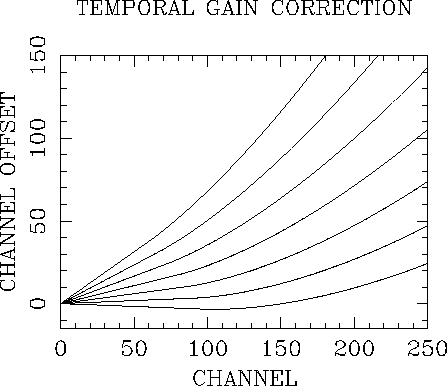| About ROSAT |
ROSAT Home Page | ROSAT Images |
|---|
The detector gain (i.e., pulse height as a function of energy) changes slowly due to variations in the gas density, composition, high voltage, pressure, and temperature. The temporal gain variation is corrected by normalizing the event pulse height by a function of the temporal gain G(t) (see Chap. 8).
In-orbit, temporal variations in the PSPC gain are monitored
using an X-ray calibration line (at 1.49keV) provided by the
Al K ![]() source on the PSPC filter wheel
(Sect. 3.3.2).
source on the PSPC filter wheel
(Sect. 3.3.2).
The actual frequency of the gain calibration measurements,
(each taking ![]() minutes) depends on the mission phase
but calibrations are performed at least once per weak.
There are small temporal gain variations
of less than 1% within each orbit.
Investigations of these variations are under way,
the results will be addedto the handbook when they are available.
minutes) depends on the mission phase
but calibrations are performed at least once per weak.
There are small temporal gain variations
of less than 1% within each orbit.
Investigations of these variations are under way,
the results will be addedto the handbook when they are available.
The effect of the temporal gain correction (applied on top of the gain saturation correction) is demonstrated in Fig. 3.14 for a range of nominal gains. The channel offset is the rough number (position gain corrections are not considered here) of channels added to the PHA channel to produce the PI channel.

Figure 3.14: The difference between the true and measured pulse height channel.
The curves of
Fig. 3.13 are now corrected
for the variations in absolute gain. The curves are for nominal
gains of 90 (top), 100, 110, 120, 130, 140, and 150 (bottom).
The deviations from straight lines are caused by corrections
for the gain saturation effect
[Hasinger and
Snowden1990].